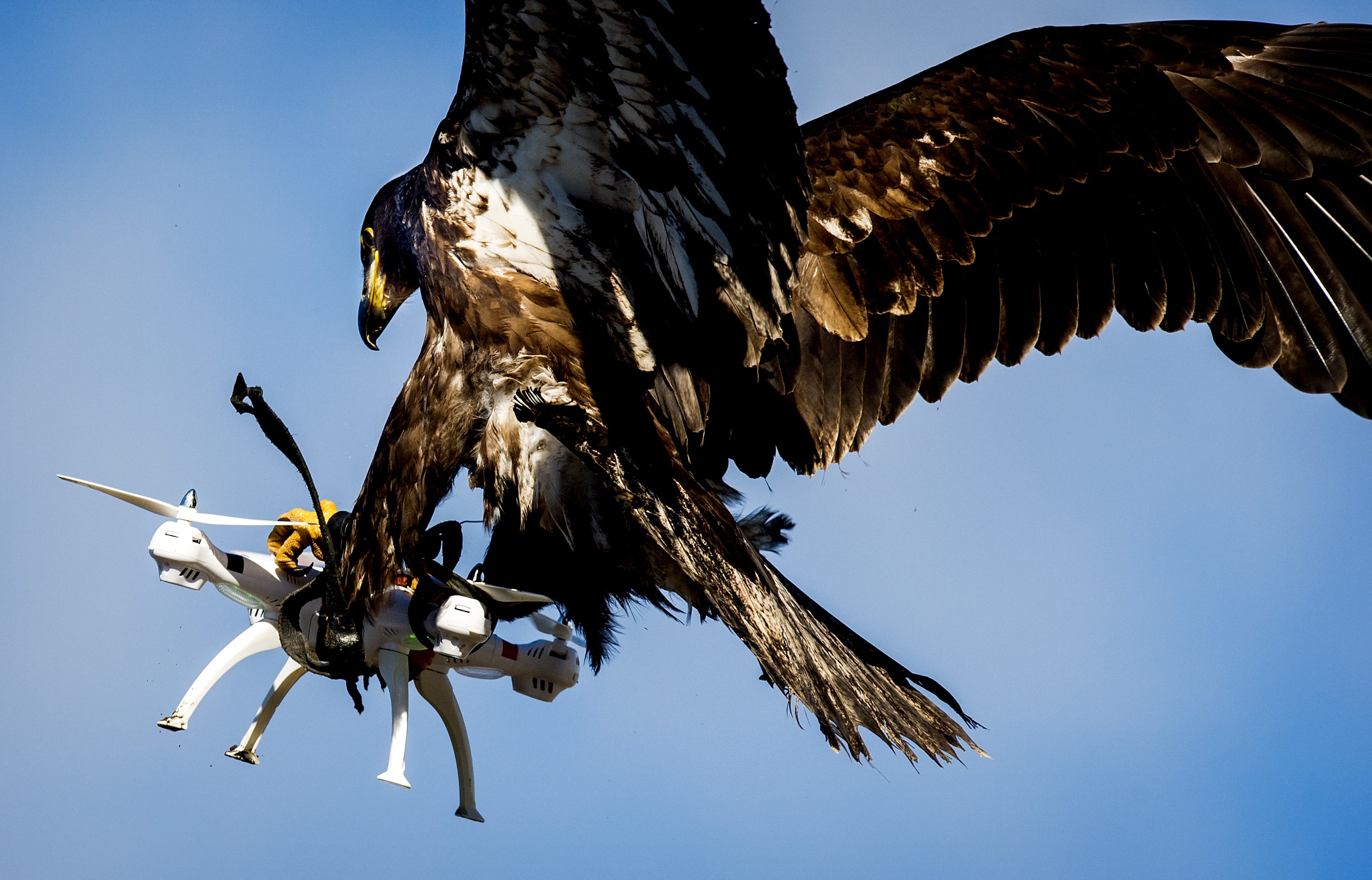Air power is available to anyone with a few hundred dollars and a willingness to get creative. Though never exclusively the domain of nations, flying machines that can be bent toward war are cheaper than ever, thanks to a thriving commercial market for hobbyist drones.
Stopping drones — from the cheapest quadcopters haphazardly weaponized by insurgents to the advanced machines procured by America’s near-peer competitors — has become a major concern for the Pentagon. Which is why, when it comes to the fiscal 2020 budget, the Defense Department’s request for counter-drone spending ... dropped by roughly half. (Yes, you should be scratching your head.)
The fiscal year 2019 budget request for counter-drone systems came in at about $1 billion, with $900 million enacted. But Dan Gettinger, co-director of the Center for the Study of the Drone, which has tracked spending related to unmanned systems at the Pentagon every year since 2013, noted that the fiscal year 2020 request is about $500 million.
Of all the drone-related spending the center tracks, in the in the fiscal 2020 budget request “the counter-UAS category has declined by the greatest amount," Gettinger said.
RELATED

How to make sense of the smaller ask? A partial answer is that the military is likely on the other side of an initial rush to figure out what, if anything, it can do about the first drones used in the field by insurgents. After all, in the space of a few years, rifle-shaped jamming antennas went from counter-drone concept to standardized deployed tool to potentially outdated half measures that the military wants to replace with more effective, lighter options.
In February 2018, the Center for the Study of the Drone published a survey of the known counter-drone technologies, including human-portable jamming rifles to trained eagles to net-carrying drones. In total, the center identified 235 products or services that offered some form of detection, tracking and sometimes interdiction. (Eagles, despite the novelty and the headlines, are expensive to train and risk injury to the birds, especially if intercepting explosive payloads.)
In addition, Gettinger said, tracking the counter-UAS budget “is kind of hard.”
In the center’s reports, an estimate of total spending on counter-drone systems looks across all the armed services to see what is squirreled away, and where. “There are a lot of traditional air defense systems that have been modified to countering-UAS applications, and there are also new technologies like directed energy, which we do count as a counter-UAS system, which could also be used for combating unmanned aircraft,” he explained.
While the range of specific products can be overwhelming, there’s a tremendous amount of overlap in the “how” of countering drones. Detection systems primarily use one or more radar, radio-frequency, electro-optical, infrared or acoustic sensors.
The act of interdiction, or stopping the drone, is primarily offered through non-kinetic options — radio-frequency jamming, satellite link jamming and spoofing of the communications links — or a more direct approach through directed-energy weapons that destroy part of the drone. Then there are nets to entangle the drone or other projectiles.
Detection and interdiction systems come in three general platforms types: ground-based, hand-held or drone-mounted. That’s a lot of possibilities, so it’s natural the military has spent some time trying to identify feasible options.
One option that’s seen a reduction in funding is Counter Unmanned Aerial Systems (H30505), an Army program nestled under a larger indirect fire program designed to develop and test counter-drone systems for use against small and light commercial off-the-shelf drones. Spurred by a joint urgent operational need statement, the program purchased systems in fiscal 2018 and 2019 to test and evaluate those systems for use in security. Funding in the fiscal 2020 request is designated for providing security to select high-priority sites within the continental United States.
The prior expenditure is as much about figuring out what worked in the “low-slow-small UAS integrated defeat system” space, and what didn’t.
In contrast, the Navy wants to launch its own counter-drone tool assessment program. The request in fiscal 2020 is a relatively modest $5.5 million, but it’s a line item expected to grow in years to come, as the Navy has a better understanding of what it wants to acquire, test and deploy.
The existence of commercial drones adapted into threats makes for an easy case as to why the Navy wants to deploy dedicated counter-drone devices. But the budget request does note that further details are available at a higher classification level than what is public.
“Even though the budget is lower this year, there are signs that counter-UAS will remain a priority,” Gettinger said. “In past years, and in this year as well, a lot of the counter-UAS funding has been allocated in programs that are not just counter-UAS. Te Air Force’s Physical Security acquisition program, for example. A lot of the services haven’t had a program of record, but in [the] FY20 budget we do see some programs dedicated specifically to counter-UAS. I think that’s a sign that this is going to remain a priority.”
Kelsey Atherton blogs about military technology for C4ISRNET, Fifth Domain, Defense News, and Military Times. He previously wrote for Popular Science, and also created, solicited, and edited content for a group blog on political science fiction and international security.







